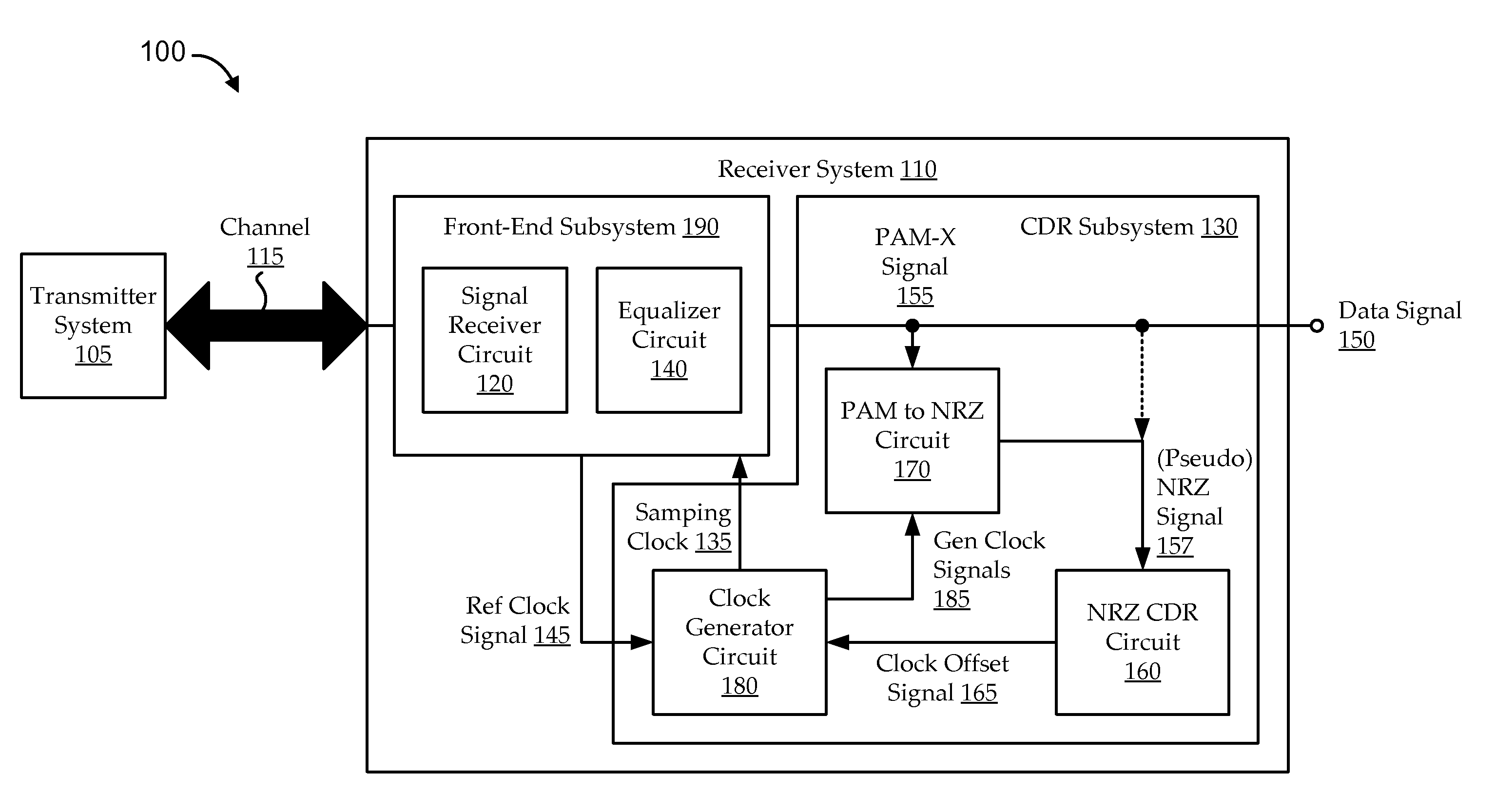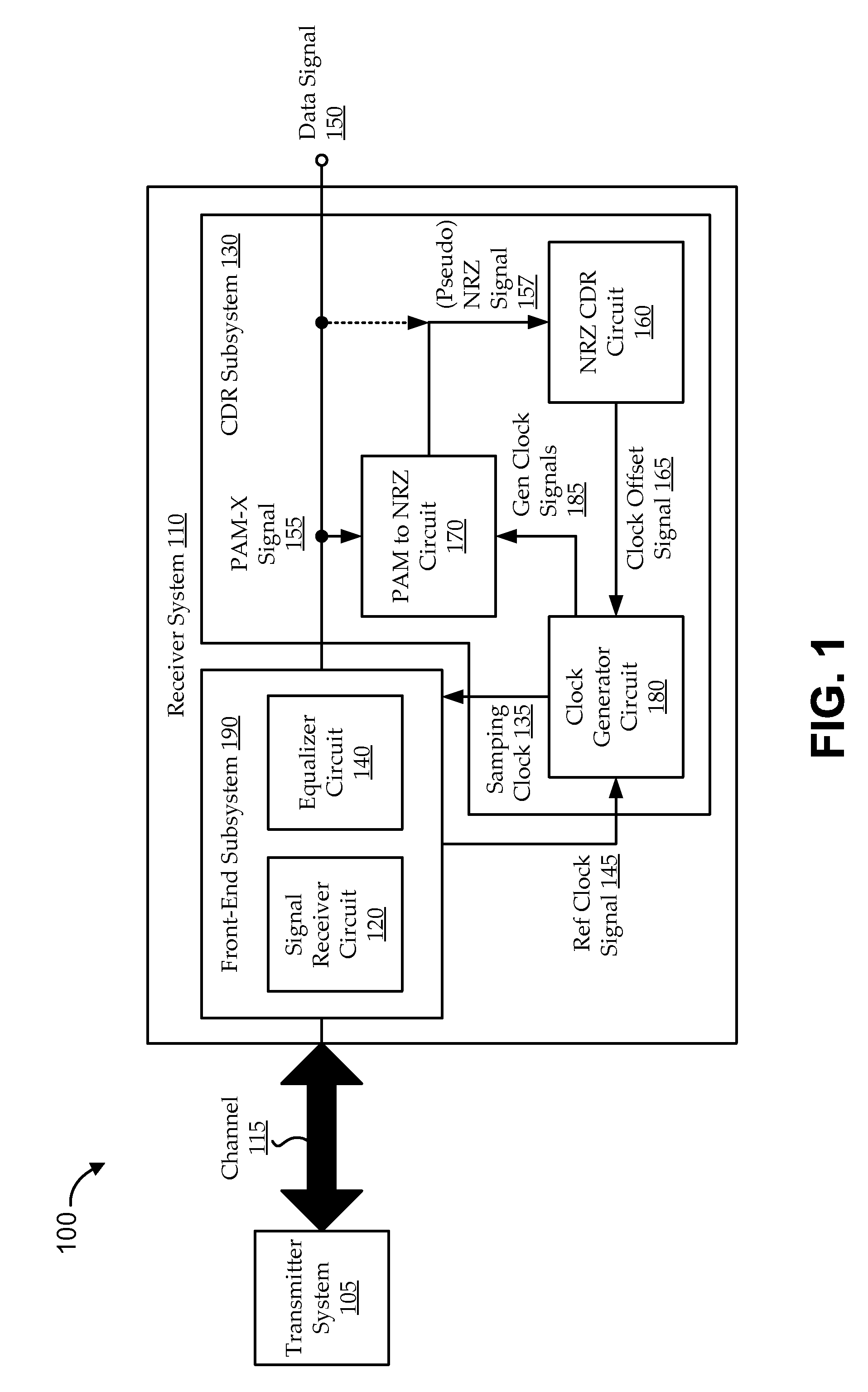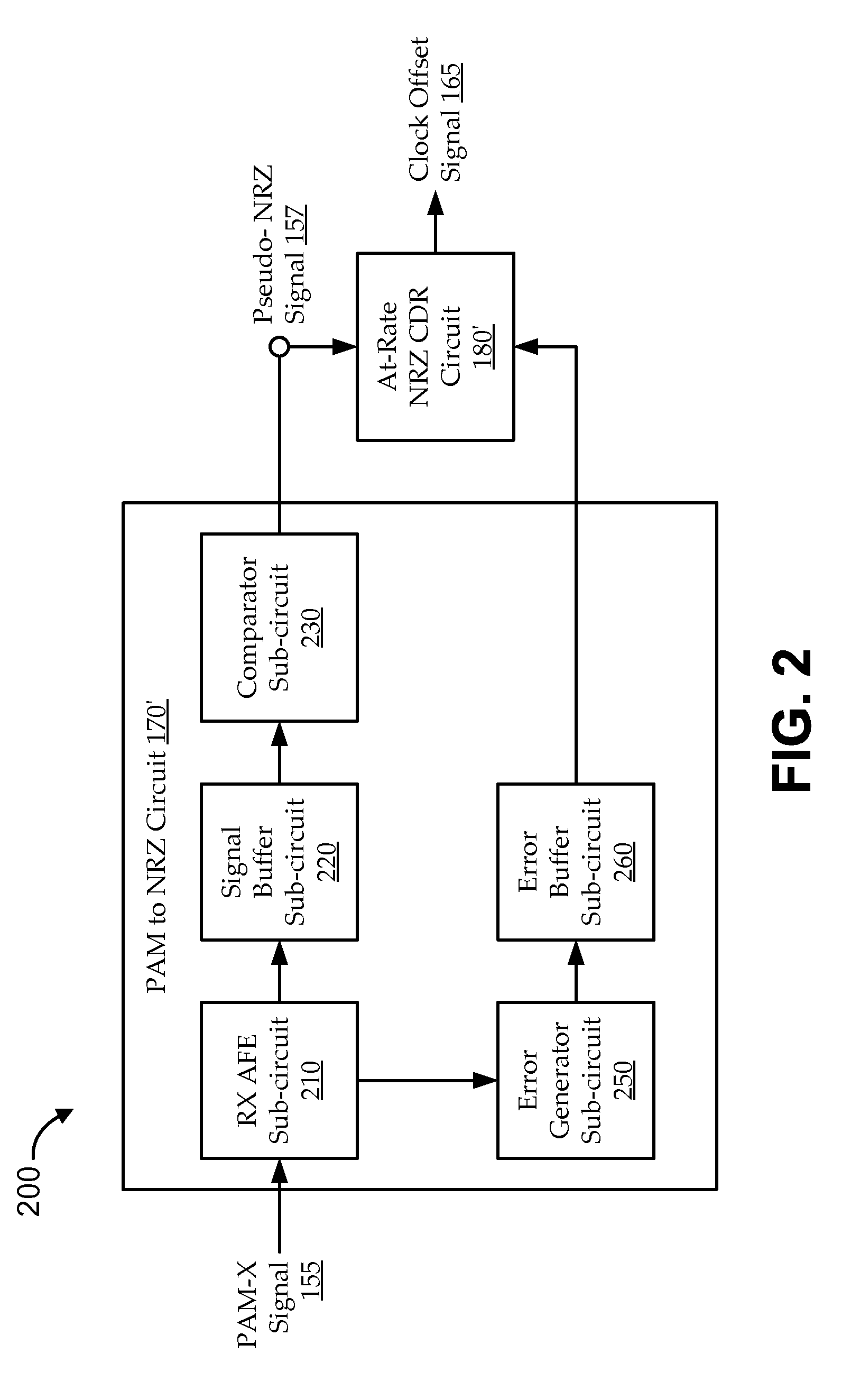Configurable pulse amplitude modulation clock data recovery
a pulse amplitude modulation and clock data technology, applied in the direction of digital transmission, synchronisation error correction, electrical equipment, etc., can solve the problems of higher frequency operation, higher power consumption, and even more attractive serdes circuits, so as to facilitate dual-mode signaling, reduce workload, and operate at higher frequencies.
- Summary
- Abstract
- Description
- Claims
- Application Information
AI Technical Summary
Benefits of technology
Problems solved by technology
Method used
Image
Examples
Embodiment Construction
[0017]Many electronics applications include communications channels that have transmitter and receiver components to move data through the electronics application. Some receiver circuits are serializer / deserializer (SERDES) receiver circuits that can, for example, convert parallel data from the communications channel into a serial data stream for processing, etc. Various functions of the SERDES rely on clocking to effectively sample and / or process the data being received from the channel, and the clock signal is often recovered from the data itself using a clock data recovery (CDR) circuit. Some CDR circuits (e.g., Mueller-Muller (MM) CDRs) use data samples to recover clock timing information. Thus, the rate of the resulting clock signal is the data rate, and such CDR techniques are often referred to as “at-rate” CDRs. At-rate CDR techniques provide various features, such as avoiding double-rate clocking, which can appreciably reduce power consumption.
[0018]Still, while serial commu...
PUM
 Login to View More
Login to View More Abstract
Description
Claims
Application Information
 Login to View More
Login to View More - R&D
- Intellectual Property
- Life Sciences
- Materials
- Tech Scout
- Unparalleled Data Quality
- Higher Quality Content
- 60% Fewer Hallucinations
Browse by: Latest US Patents, China's latest patents, Technical Efficacy Thesaurus, Application Domain, Technology Topic, Popular Technical Reports.
© 2025 PatSnap. All rights reserved.Legal|Privacy policy|Modern Slavery Act Transparency Statement|Sitemap|About US| Contact US: help@patsnap.com



